Welcome to our guided tour of the exhibition Egypt of Glory for the little ones! This tour is especially suited for everyone under school ages. You can join in by listening.
Note that the exhibition was on display at Amos Rex 9.10.2020–23.3.2021.
This is Ou
This is Ou
Here we have Ou. Ou is special, as it appears only for children.

Ou’s home is at an art museum called Amos Rex. No one knows for certain where exactly Ou lives, but sometimes during the day, it has been seen napping in the window of the smallest ceiling dome. Museums are places where you keep, show and handle, for example, artworks or other objects.
Ou’s home is visited by a large group of people every day to see the exhibitions. Ou often eavesdrops on people, hears delighted ”oohs”, and sometimes, a sniff. Yet now Ou’s home is very quiet: it is night, and everyone else is asleep, except for Ou and Nut.
Who swallowed the sun?
Who swallowed the sun?
Before, Ou did not know why the sun gets up in the morning and sets at night, although it did wonder. Now Ou has met Nut, and the mystery of the sun is solved!
Nut is the sky goddess, and the sky is a part of her body. In the evening, when the sun has cooled down a bit, Nut swallows the sun in one bite. Night then takes over the world and Nut’s body is lit up by the stars.
Ou gets to know ancient Egypt
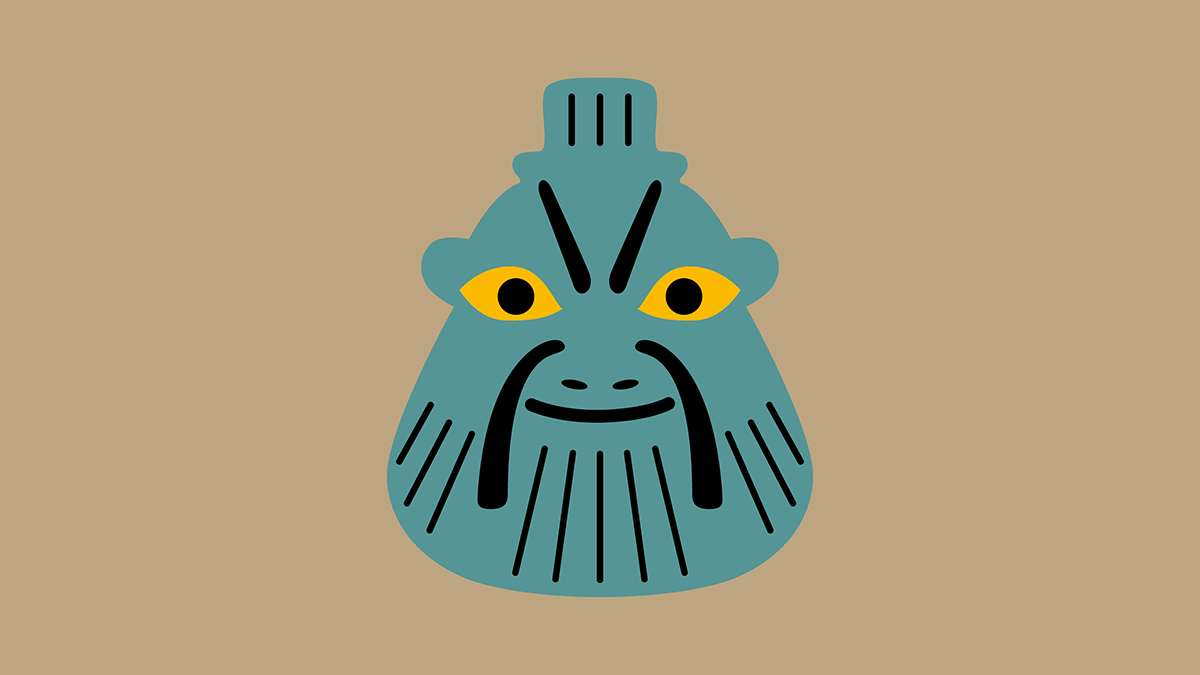
Ou gets to know ancient Egypt
Nut has come to Finland together with a group of visitors from far away in ancient Egypt. Ancient time was very very long ago, thousands of years before Ou was born. Ancient Egypt was located in Northern Africa. If you look at the world map, a country called Egypt lies in the same place today. Of course, it is very different now than it used to be when Nut and her friends governed the sun.
All the objects you can now see in Ou’s museum are from this ancient country far away. But how on earth did they end up in Finland, all the way to Ou’s museum? Once, Italian researchers took them from Egypt to Italy, and now they move around different museums around the world.
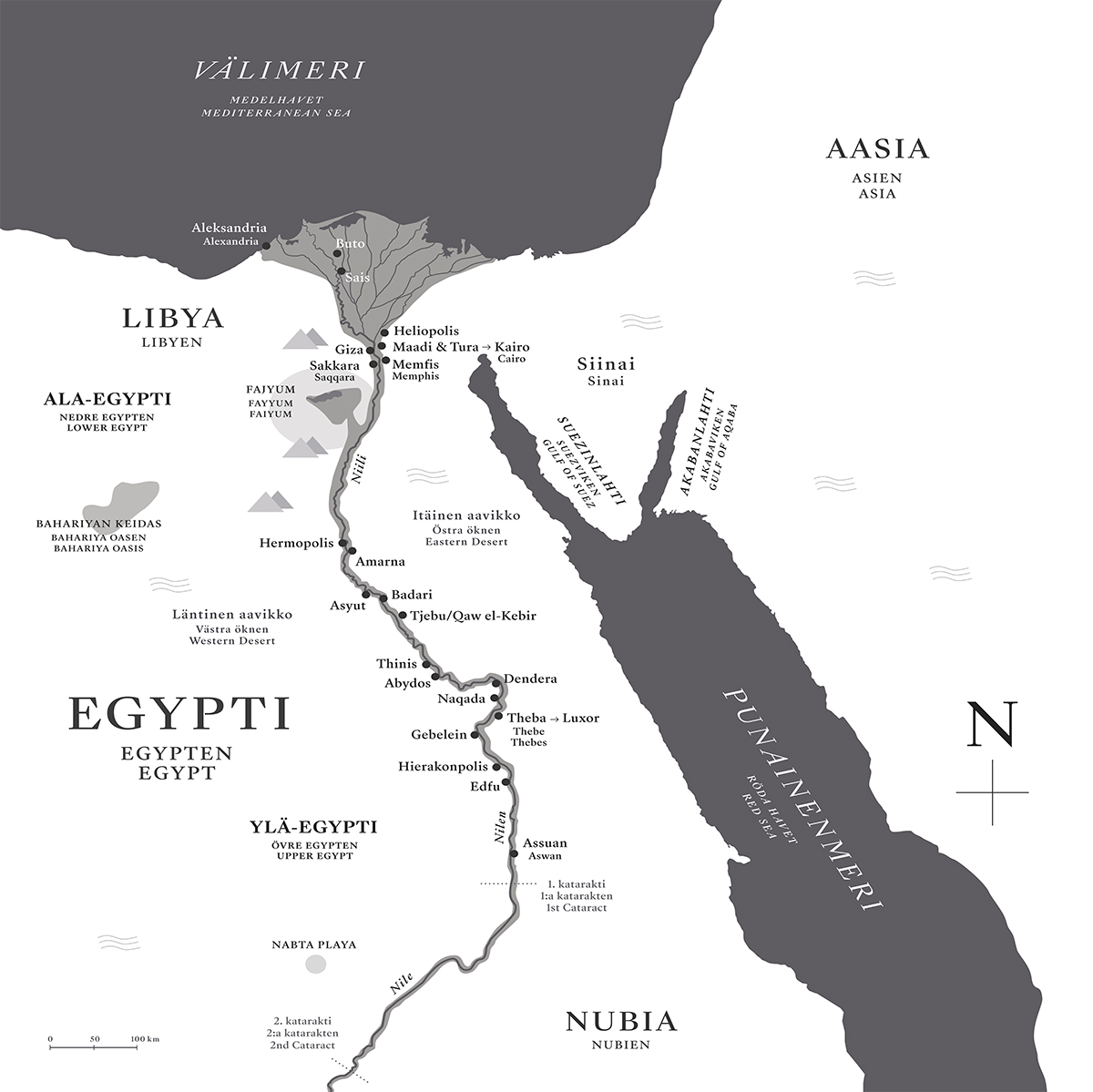
A loooong time ago

A looong time ago
Meet Ou’s new friend, a palette. Why, it looks just like a fish! The fish palette is an old being, 6,000 years old. Ou is only three years old. Ou stretches itself as long as it possibly can: ”Has it been thiiiiis long?” But this amount of time can’t be measured with Ou’s methods, there are simply too many years!
Follow Ou’s example and stretch yourself tall and show how long it’s been since you were born? Who is the oldest person you know? What about the oldest tree?
A palette is an item of daily use from ancient Egypt that is made of stone. It was used, for example, to grind colour pigments, which is colourful dust you can mix into pretty paints or makeup. The dust had to be ground before use until it was very fine, in order to avoid lumps. This was the fish palette’s very special skill. Image: Palette. Naqada I–II ~ 4000–3200 BC, greywacke
A river in the desert

A river in the desert
Ou splashes into the Nile like a beach ball. The Nile is a river that runs through the whole of ancient Egypt. Ou soon senses that there is someone else in the river. Chills run all over Ou’s round being: surely it’s not a crocodile swimming through the Nile? Ou sighs with relief when a boat with passengers passes by.

Ou notices that something is happening on the boat. Is somebody on board pointing at something? What do they see?
Boats were greatly important in ancient Egypt since the wheel had not been invented yet. The boat was a good way to travel and move different things, such as food, even rocks from the pyramids! What is this boat carrying? Ancient Egyptians all lived by the river Nile. Plants near the water grew well, and the river provided water for everyone to drink. The rest of the land was desert, which is dry land covered in sand.
Image: Model of a boat. Intermediate Period 2160–2055 BC, wood
Ou bakes
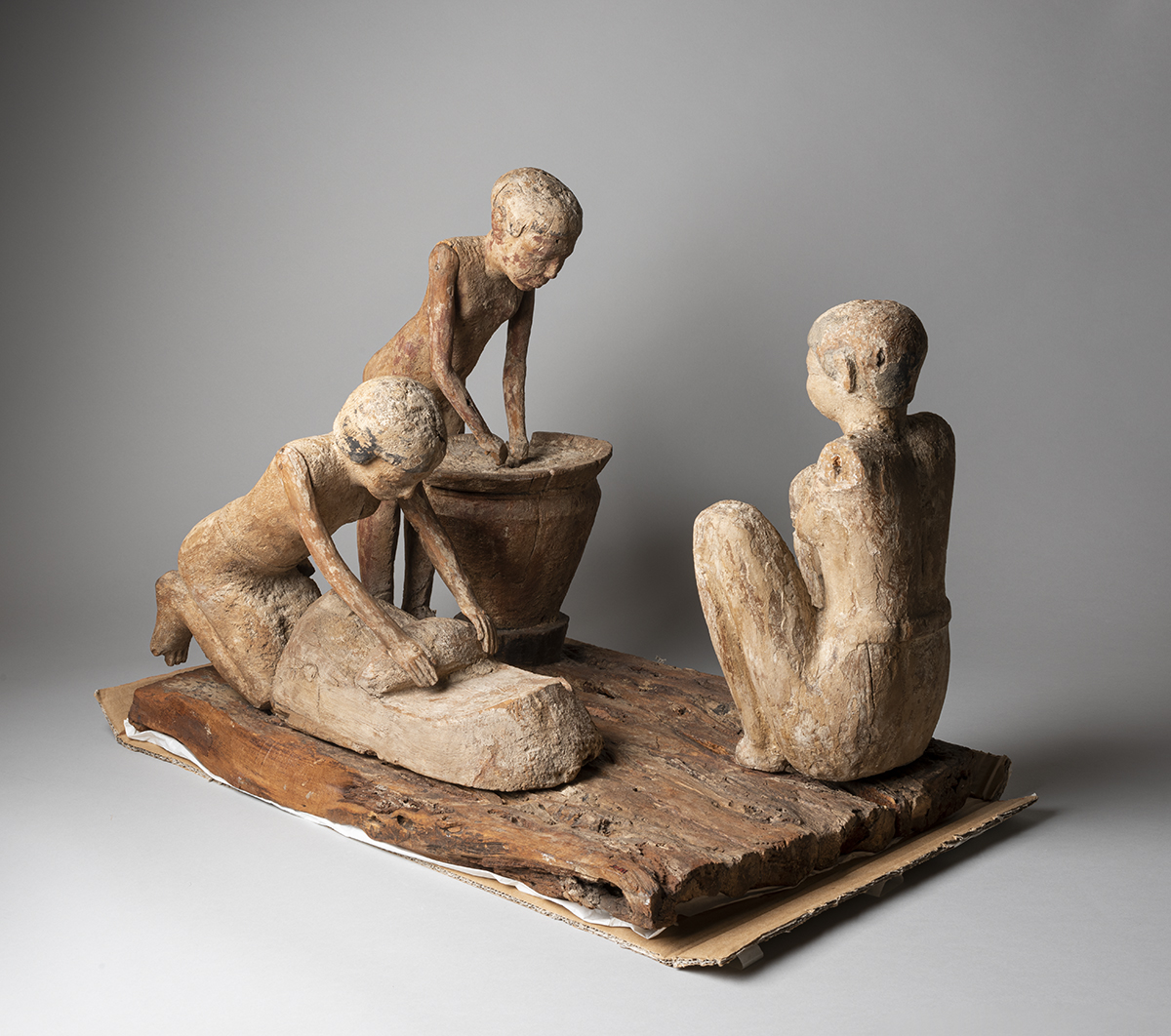
Ou bakes
Oh my! A bakery that is over 4,000 years old! What would have been the most popular bakery products thousands of years ago? At least this bakery is making something in a large bowl. Will it be bread, or perhaps a date cake? Ou begins to dream of its favourite treat, the Berliner doughnut…
Ou wants to bake too! Ou jumps in, starts to whip frantically and produces a fluffy pile of cream. At that moment, a small creature with a long tongue appears and eats all the cream! Who is this turquoise-coloured figure?
Image: Model of a bakery. Old Kingdom 2686–2160 BC, wood
Rascal of a little fellow
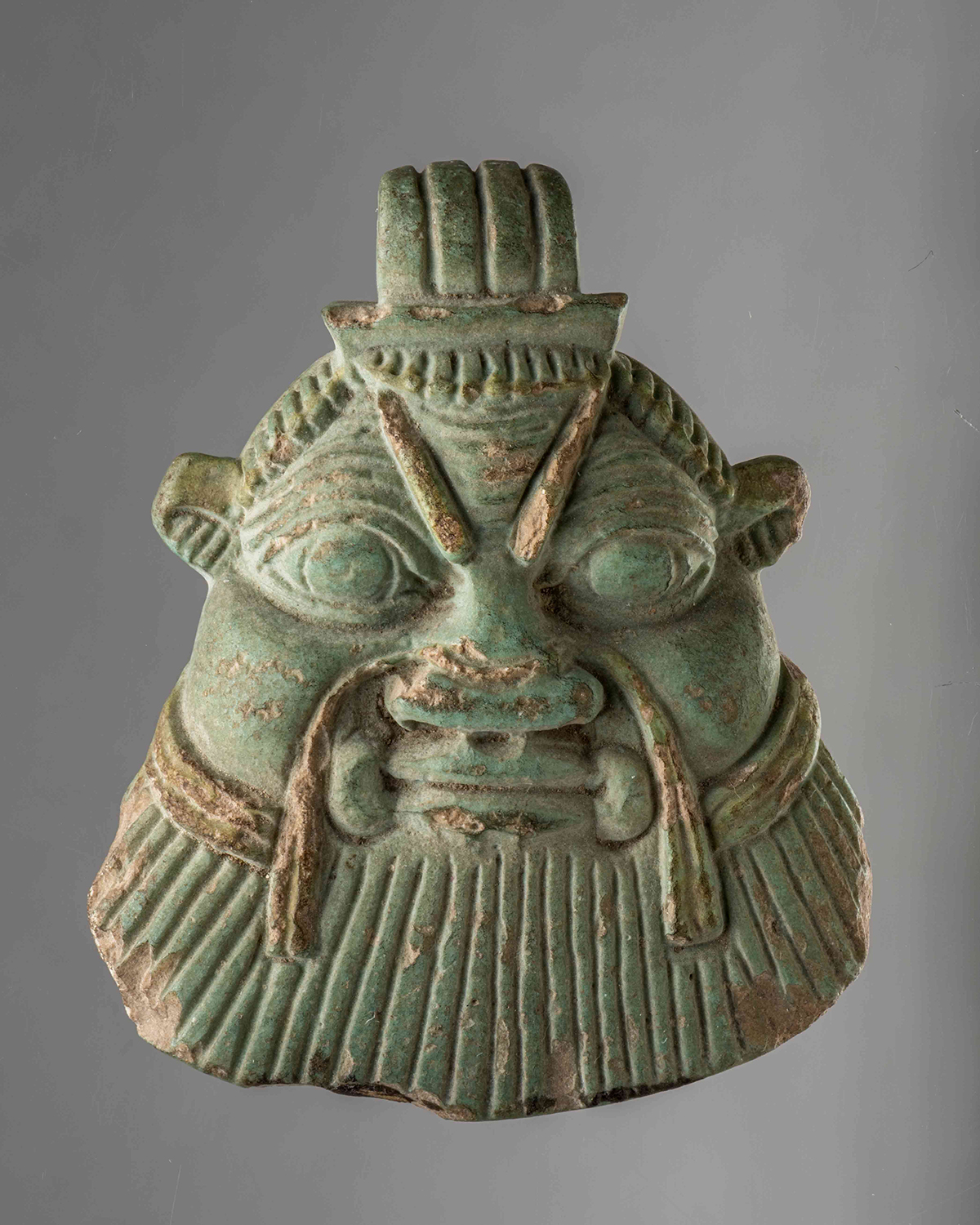
Rascal of a little fellow
Ou turns to the small turquoise figure. It shows its tongue to Ou and lets out a laugh. Ou spins in the air enthusiastically – finally, some action!
The character introduces himself: he is the protector god Bes. Bes was a celebrity in ancient Egypt. Like Ou, Bes likes children and uses his powers to protect children and families. Bes can scare away evil spirits, just like that! Bes looks fierce and teaches Ou a couple of good grimaces. Try it: stick out your tongue while making a scary sound. Louder! Give a good glare! Buahahahaaaa!
Bes is also the god of joy and dance. Bes and Ou fall into a wild dance together. Ou spins, turns shakes, wiggles, sways and rises up towards the skies. The nightly jiggle continues until a terrifying roar breaks the air – Sekhmet is awake.
Here is a small amulet of Bes, which is easy to carry around. Images, statues and amulets of Bes could be found in almost every home in ancient Egypt. An amulet is an item, which is believed to bring good luck and fortune to the person wearing it. Do you have an important item like this?
Image: Bes, amulett. Late Period 664–332 BC, faience
Sun goddess Sekhmet
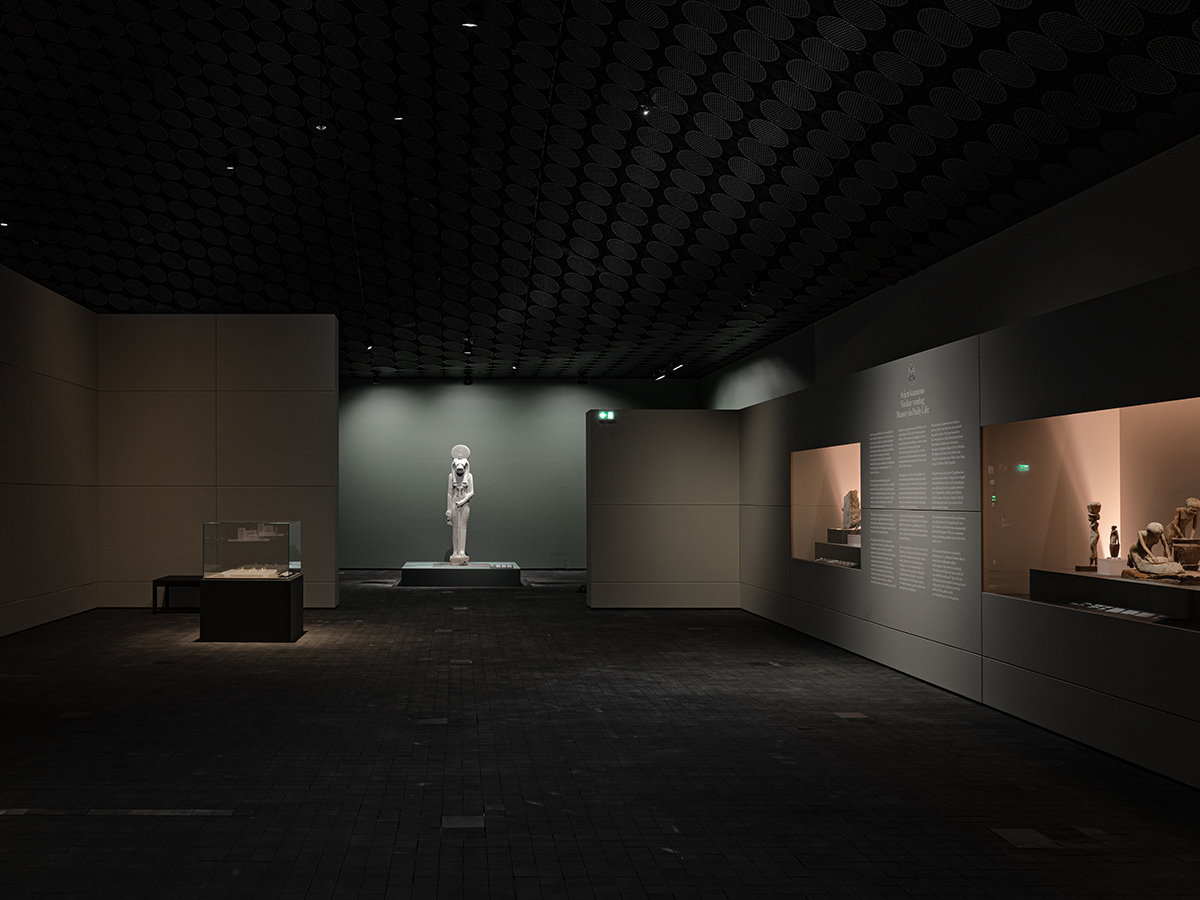
Sun goddess Sekhmet
Sekhmet, the goddess of war, disease and healing, rises mightily in front of Ou. Ou shrinks into the corner – rumours say that Sekhmet may even spit fire! Ou crawls closer to Sekhmet. Sekhmet’s body is like a human’s, but the head is something else entirely!
Sekhmet can heal illnesses and bring back life, but she can also be moody and spiteful sometimes, like so many of the ancient Egyptian gods .
Even though Sekhmet is great and powerful, she somehow seems so terribly lonely. Ou feels lonely at times too. That’s when Ou turns into a pale colour and only wants to drip through the museum floor.
Homesick
Sekhmet is homesick. How do you help a friend who is longing for home? For thousands of years, Sekhmet’s home was in Egypt, but in the last few centuries, she has lived in Italy. Homesickness can sometimes come over even the greatest of gods.
Ou is taken over by a sad feeling for its new friend. Ou has heard that gods of ancient Egypt like gifts. Ou quickly runs to get something from her secret stash. Like museums, Ou also collects things: shiny candy wrappers that have fallen from people’s pockets and strange little pebbles brought to the museum by people’s shoes. Ou takes the most valuable object from its stash and brings it to Sekhmet. The goddess’s mouth curls into a tiny smile, and Ou is filled with vibrating warmth.
What gift do you think Ou gave Sekhmet?
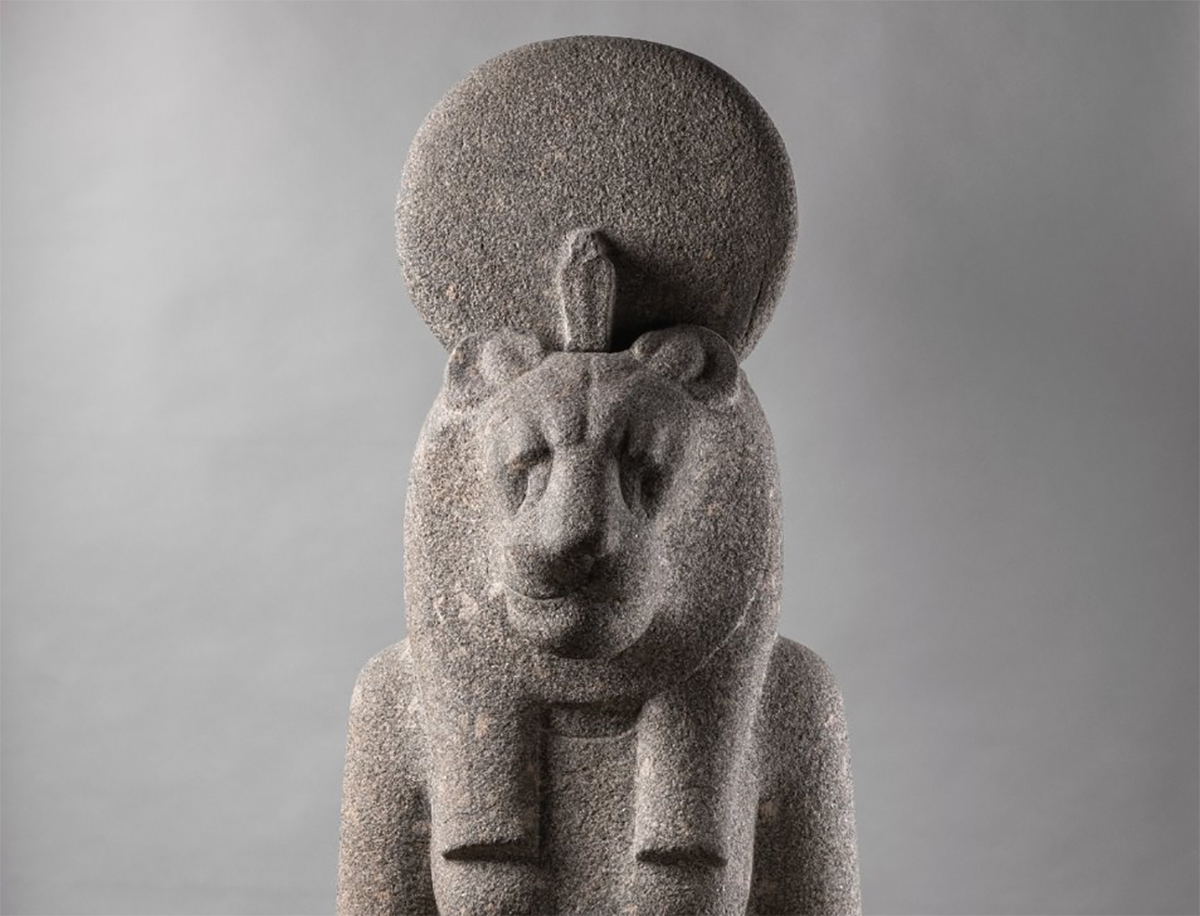
Image: Sekhmet, 18. Dynasty, (Amenhotep III), 1390–1352 BC, granodiorite
The rising sun
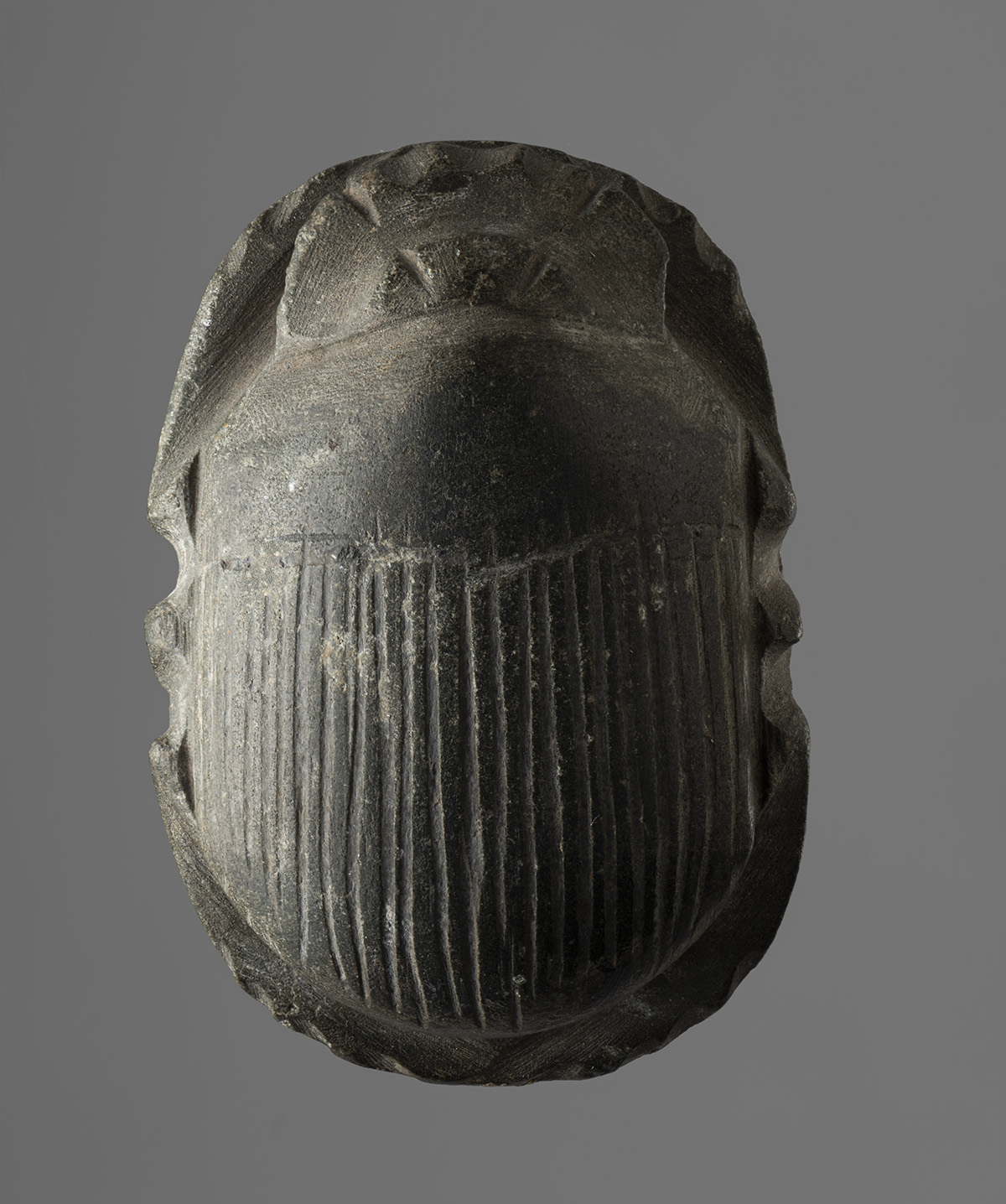
The rising sun
Small running noises can be heard from the museum roof. Ou does not know what to think – usually Ou is the only one who moves that high up in the museum. Ou recognizes scarabaeus, the small scarab beetle, who is scampering across the ceiling. This bug is Nut’s helper in moving the sun. In nature, the scarab beetle is the world’s strongest insect, not surprising then that it has received such an important mission from Nut. The night moves aside, and Nut prepares to return the sun back onto the sky.
As the morning breaks, sad feelings disappear. When the daytime arrives, Ou says goodbye to her new friends and disappears back into her hole to get some sleep.
Image: Scarab, amulet. New Kingdom, 1550–1069 BC, steatite
Thank you <3
Thank you for coming to Ou’s tour.
Send a message to Ou via mail:
Amos Rex
Ou
Mannerheimintie 22–24
00100 Helsinki
Images: Amos Rex & Museo Egizio